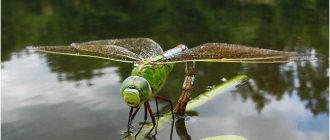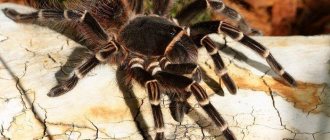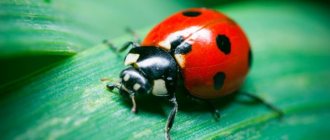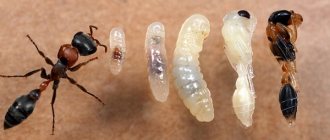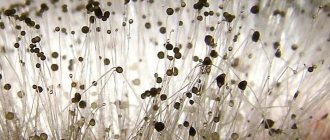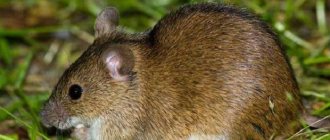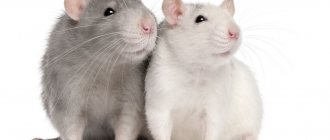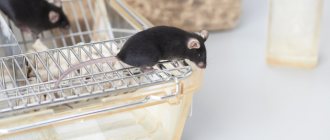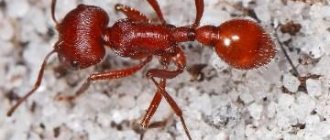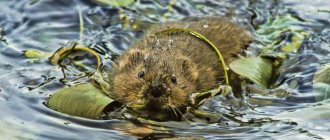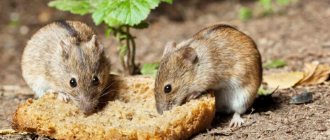Rodent squad: general characteristics and features
Rodents are a group of mammals that numbers more than 2 thousand living species. This is the most numerous and ancient order in the class of mammals. Based on fossils, scientists have revealed that the history of the order began 56 million years ago.
The closest relatives are rabbits and hares, forming the order Lagomorpha.
Features of the structure:
- Teeth. Distinctive features are the long upper and lower pairs of incisors, which do not have roots and grow throughout the animal's life. Elongated incisors are needed for gnawing hard food.
- Dimensions. Most representatives of mammals are small in size: from 5 cm to 50 cm. The exception is the largest representative of the species - the capybara, whose length reaches 130 cm, weight up to 91 kg.
- Skeleton. Features of the skeleton are a stocky build, hind legs longer than the front, and a long tail. The tail of some individuals may be significantly longer than the body.
- Digestion. Due to feeding on rough plant foods, rodents have long intestines. They have a cecum, where food is processed through fermentation.
This type of mammal is not whimsical and does not require special knowledge or skills in care, so rodents are often chosen as pets.
Features of care:
- Housing. It must be remembered that most rodents are active animals. The cage should be spacious and kept clean. Removal of food debris and washing of the sippy cup is carried out daily. Cleaning the floor and cleaning the litter - once a week. Once a month you need to disinfect the cage.
- Dental care. There should always be wooden sticks in the cage so that the pet can grind his teeth, which are constantly growing, on them.
- The washing up. You need to place a container with fine sand in the cage so that the animal can clean its fur.
- Situation. Rodents are shy and sensitive creatures, so housing, if possible, should be located in a secluded place, protected from the hustle and bustle.
The numerous species of rodents make their classification extensive. The rodent order has 5 suborders:
- protein-like;
- mouse-like;
- porcupines;
- spiny-tailed;
- beaver-like
Classification: more about suborders
- Squirrel-like. Members of the suborder include squirrels, chipmunks, marmots, and flying squirrels. They live mainly in forests, have strong muscles of the lower jaw, this allows them to gnaw and break solid food. Most representatives of the suborder are omnivores.
- Mouse-like. You can most often meet representatives of this family in everyday life. These include mice, rats, hamsters, voles, lemmings, jerboas, and muskrats. Most of them are nocturnal and feed on seeds and grains.
- Porcupines. The group includes agouti, porcupines, mole rats, nutria, chinchillas, and capybaras. Most representatives of this class are large species with a heavy, rather awkward physique. They are characterized by modified hair into coarse bristles or needles.
- Spiny-tailed. There are nine species, including spiny-tailed squirrels, Pela spinytails, long-eared spinytails, and Cape striders. These animals got their name because of their tail, which is partially devoid of fur and covered with pointed scales. Some members of this suborder, with the exception of the spiny-tailed squirrels, have flight membranes that allow them to glide.
- Beavers. There are about 100 species from 3 families: beavers, gophers and pouchhoppers. Scientists identified it as a fairly young detachment only in 2005. This class includes large rodents with cheek pouches and strong limbs.
Reference! Scientists consider the squirrel-like animals to be the most ancient suborder. It is believed that the remaining suborders were formed precisely from them (with the exception of porcupine rodents).
Nutrition
Rodents eat a variety of foods, including leaves, fruits, seeds and small invertebrates. Cellulose foods are digested in the cecum (a sac in the digestive tract that contains bacteria that can break down solid plant material into a digestible form). Food is either eaten where it is collected, or it is brought into burrows for storage (for example, gopher rats, Gambian rats, hamsters, etc.). Species living in arid habitats and on oceanic islands can obtain essential fluids from their food.
Popular pet rodents
The most common pets are:
- hamster;
- decorative rabbit;
- guinea pig;
- chipmunk;
- chinchilla;
- Chilean squirrel;
- decorative rat;
- gerbil;
- rabbits;
- jerboa;
- rats;
- mice.
Hamsters can be up to 35 cm in length
Hamster
Appearance: Small, tightly built animals. The back is dirty brown to brown.
Body length: from 7 to 35 cm, depending on the species. The length of the tail does not exceed 10 cm. Often, females in hamsters are larger than males.
Peculiarities:
- It must be remembered that hamsters are nocturnal animals. During the day he will sleep and will not want to play with his owner.
- You should not put two hamsters in one cage, otherwise fights will result, even to the death of one of the animals.
- They are not very picky about food. They feed on cereals and also eat fruits and vegetables: apples, carrots, pears, celery, and beets are suitable.
- The life span of hamsters is short, on average 2-3 years.
Important! You should not feed hamsters citrus fruits, potatoes, cabbage, exotic fruits, or Brazil nuts.
A hamster cage should be at least 30 by 50 cm in size, with thick metal bars. The cage should have a house so that he can have privacy, a running wheel, a drinking bowl and a feeder.
Decorative rabbits are quite small
Decorative rabbit
Decorative rabbits are characterized by their small size.
Body length: from 20 to 50 cm,
Weight: from 800 g to 3 kg.
There are long-, medium-, and short-haired breeds. According to the location of the ears, they can be either lop-eared or erect-eared.
Peculiarities:
- They love to walk, so you need to buy a collar and leash. Walking does not need to be done every day.
- The rabbit masters the litter box very well.
- This pet is light and compact, so you can take it with you in a cage to the country house or on other trips.
- The animal is very sociable and can get stressed from prolonged inattention.
- Easily tolerates changes in habitat.
- The life span of a decorative rabbit is 8-10 years.
Rabbit food: cabbage, lettuce, beet tops, carrots.
Housing for a rabbit should be chosen with a reserve of space, as the rabbit will grow up.
Guinea pigs are quite good-natured
Guinea pigs
Appearance: small, up to one and a half kilograms, densely built animal with hanging ears, large eyes and a wide muzzle.
Peculiarities:
- They have a good-natured and trusting character, a peaceful temperament.
- Guinea pigs are quite delicate animals. Therefore, it is better to protect the cage from ultraviolet radiation, drafts, and other heating devices.
- In nature they live in herds, so they can get bored when alone.
- They prefer fruits, vegetables and herbs in food. For proper functioning of the digestive system, it is worth supplementing the diet with hay.
- The life period is from 4 to 9 years.
The enclosure should be selected depending on the size of the pig. The animal does not run in a wheel.
Reference! Guinea pigs have evolved to lose the ability to synthesize vitamin C, so they must obtain it from their diet.
Chipmunks easily adapt to life in captivity
Chipmunk
Distinctive feature: longitudinal stripes on the back. Usually there are 9 of them - 5 dark and 4 light.
Body length: from 5 to 15 cm.
Weight: from 30 to 130 g.
Peculiarities:
- Easily adapt to life in captivity
- If there are several animals, then from autumn to spring they may not get along well with each other.
- Chipmunks are very neat.
- They don't handle the heat well.
- The animals are omnivores. It is best to feed them nuts, oatmeal, berries, dandelions, acorns, and fruits. The diet should contain animal protein - eggs, insects, raw meat.
- The life span of a chipmunk can be up to ten years.
Important! It is undesirable to give chipmunks almonds - the silicone acid they contain can harm the animal.
Chinchillas should not be washed in water.
Chinchilla
Appearance: Chinchillas have a round head with a short neck. The body is covered with thick hair. The ears are round in shape, 5-6 cm in length. The ears are equipped with a special membrane that protects them from sand.
Body length: from 22 to 38 cm, tail from 10 to 17 cm.
Weight: reaches 700-800 grams. Females are larger and heavier than males.
Peculiarities:
- They are nocturnal animals. Easily navigate in the dark.
- Animals should not be placed in water. Clean with fine sand.
- Chinchillas do not shed, so they are suitable for people with allergies.
- The animal loves to be at heights, so housing for the animal should provide a special shelf.
- They eat only once a day. The chinchilla's diet consists of pelleted food, corn and oats.
- Life expectancy reaches 20 years.
The chinchilla's housing must have dimensions of at least 50 x 70 cm.
Would you like to have a chinchilla at home?
Degus are very clean
Chilean squirrel (Degu)
Appearance: thick, short neck, small rounded head. Its front legs are shorter than its hind legs, and the tip of its tail has elongated, coarse fur.
Features: flattened nose and hunched back.
The body length does not exceed 40 centimeters including the tail.
Weight – no more than 300 grams.
Peculiarities:
- They lead a diurnal lifestyle.
- Degus are clean. The owner only needs to wash the cage once a week.
- Chilean squirrels are active and curious animals. It is important to satisfy their natural curiosity. Therefore, the cage must contain various protrusions and obstacles.
- They feed on dried grass, tree bark, and plant seeds.
- The life period in captivity is 8 years. In nature they live for about 4 years.
Rats are very sociable
Decorative rat
The length of a decorative rat can reach 20 cm, weight – up to 500 g.
There are several breeds: standard, rex, sphinx, satin, tailless.
Peculiarities:
- They are social animals - they need constant communication.
- Alone, an animal can get bored.
- In nature they live in same-sex flocks.
- Rats are nocturnal. But in captivity they easily adapt to the human regime.
- The animals are very smart. Trainable.
- Your pet's diet should include: cereals, seeds, nuts, dairy products, protein and meat, and vegetables.
- Lifespan in nature is about two years, in captivity – 4 years.
The home of a domestic rat should be comfortable and contain accessories for feeding, smell absorption, play and rest of the animals.
Gerbils are nocturnal animals
Gerbil
Appearance: body size from 6 to 22 cm, depending on the species. The tail has a length of 7 to 20 cm.
Weight: from 10 to 200 g.
Distinctive feature: tail covered with fur with a tassel at the end.
Peculiarities:
- Active animals require attention from the owner.
- Wakefulness occurs at night.
- Animals are clean. Cleaning the cage once a week is enough.
- They are well tamed by hand.
- The lifespan of gerbils is about 2-3 years.
- The main diet consists of herbs and seeds.
- Gerbils are desert animals, so they get their water from plants.
The cage for gerbils must be strong so that the animal does not chew through the bars.
Reference! Although the gerbil lives in a warm habitat, you should not place the cage in direct sunlight. The pet needs the opportunity to hide in the shadows.
Rabbits are easy to tame
Rabbits
Appearance: They have full, oval bodies. The ears grow up to 10 cm in length.
Dimensions: from 20 to 50 cm in length.
Weight accordingly: from 400 g to 2 kg.
Peculiarities:
- Rabbits are playful and smart pets. They are tamed by hand.
- You can train him to the tray.
- Rabbits love to turn everything over, this must be taken into account when purchasing a pet. It is better to choose a heavy bowl for water and food.
- The main food for a rabbit is cabbage, lettuce, beet tops, and carrots.
Jerboas are used to moving a lot
Jerboa
Jerboas are a group of mouse-like rodents. More than 25 species are known.
Appearance: body length is from 4 to 25 cm. The tail is from 7 to 30 cm. At the tip of the tail there is a black and white tassel.
Weight: 200-300 gr.
Peculiarities:
- In natural conditions, jerboas move a lot; in the absence of movement, a disease such as physical inactivity can develop, which will lead to its early death. The pet should be provided with a large enclosure, at least 0.5 m.
- The jerboa is a nocturnal and crepuscular animal.
- It feeds on grains, seeds, insect larvae, fruits, and vegetables.
- The life period is 3-5 years.
Important! Its tail can tell you about the state of health of a jerboa. If it is round, then the pet is healthy and eating well. A thin tail may indicate exhaustion.
Some rats reach 500 g
Rats
The body length is 8-30 cm. They are dark gray or gray-brown in color.
The weight of some species reaches 500 g.
Peculiarities:
- Amazing intelligence. Easy to learn.
- Unlike hamsters, they are fairly quiet animals.
- They need a lot of food. They are omnivores.
- Life period – 3 years.
The enclosure for the animal should be spacious.
Mice live in families in nature
Mice
The body length of a rodent can vary from 3 to 20 cm, weight - from 15 to 50 g. A long, bald or slightly pubescent tail is a distinctive feature of the animal.
Peculiarities:
- They have good eyesight. They can distinguish between red and yellow shades.
- Mice are very active and playful.
- In nature they live in families.
- Mice's teeth are constantly growing, so she needs to constantly grind them down.
- They feed on grains, nuts, acorns, insects, and leaves.
- The lifespan is 2-3 years.
Baby mice
They are one of the smallest rodents on earth. The size of an adult does not exceed 7 cm, the tail - 6-7 cm. The baby weighs no more than 10 g.
The appearance of the animal, namely its coloring, distinguishes it from other species. The fur of these mice is bright red in color, except for the abdomen, which is almost white.
Habitat: Spain, Korea, Japan, southern Kazakhstan, China and northern Mongolia. They are found in forests, fields and forest-steppe. In the summer they build nests in the grass, and in the winter they move into burrows, haystacks, and human dwellings.
Baby mice quickly adapt to their new environment. They are quite peaceful and calm. They can live in captivity. At the same time, the animals need a large, capacious cage or a small terrarium so that the little ones can move and climb freely.
In food, it prefers seeds, cereals, legumes, and small insects.
Rodent in the house: advantages and disadvantages.
There are no perfect pets. Before getting a rodent, you need to think about all the pros and cons.
Advantages
The advantages of pet rodents are:
- Compactness. Pets will not take up much space.
- Cleverness. Representatives of the detachment are very smart and amenable to training.
- Rodents are interesting to watch.
- Most representatives of the species do not need walking.
- They are clean and have a high immunity to diseases.
- Maintenance does not require special costs or finances.
Flaws
The disadvantages of such pets are:
- They require a lot of attention. Without this, the animal may become sad and die early.
- Most types are contraindicated for people with allergies.
- They may get along with other animals in the house.
- They can make noise at night.
- Lifespan. Many of the representatives of the order have a short lifespan, only 2-3 years. Saying goodbye to a pet can be upsetting for younger family members.
Harvest mouse
Habitat: Central and Eastern Europe, the southern part of Western Siberia, China (except for the south), Mongolia, the Korean Peninsula, Taiwan. This type of rodent rarely lives in houses and outbuildings, unlike house mice.
The field mouse prefers open areas - bushes and fields. In megacities it mainly lives in green zones. Lives both in burrows and other natural shelters. Rodents that live in swampy areas build nests in bushes or grass.
The body length of the animal can reach up to 12.5 cm, the tail – up to 9 cm. The color of the field mouse is grayish-brown, with a dark stripe running along the back.
The animal’s diet, which changes depending on temporary conditions, is based on plant foods and insects. Field mice are the largest pests for agriculture and forestry, and they can also live in country houses.
Types of rats living in nature
Most often in nature and in cities near human habitation you can find ordinary gray rats, less often - black ones.
Gray rat or pasyuk
It lives in European countries, North America, etc. They settle in forests near water, feeding on chicks, bird eggs, field mice and carrion. In populated areas, they try to settle down next to rural domestic animals in order to eat their food. In megacities, they can be found in basements, warehouses, and near trash cans.
Odd-eyed rat
This is a very unusual type of rat that has different colored eyes. The most common combination: black, red eye or dark ruby. The value of an animal is determined by the amount of contrast between colors.
The fur of odd-eyed rats can be of any color: gray, brown, black and white, red, blue. Usually, a certain shade of fur corresponds to the color of the eyes: blacks have black eyes, whites have black and red eyes, and blues have ruby eyes. The color of the coat may have spots or streaks.
